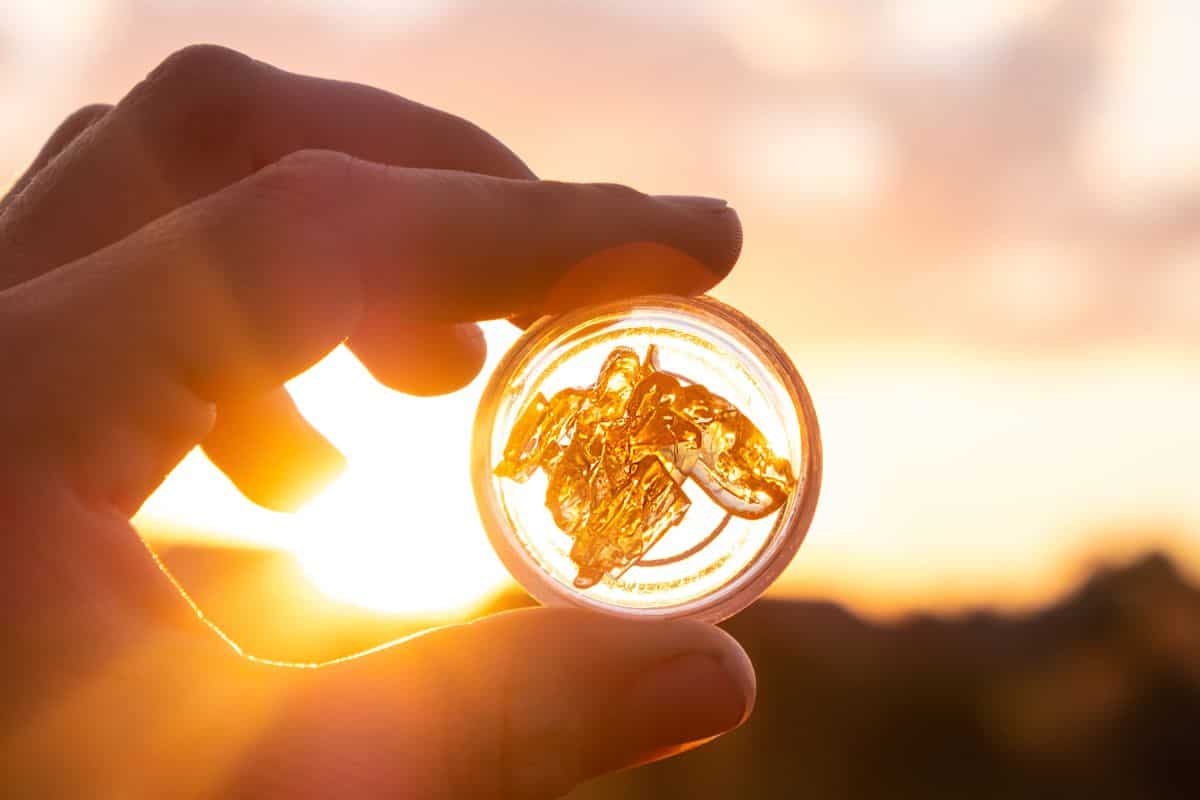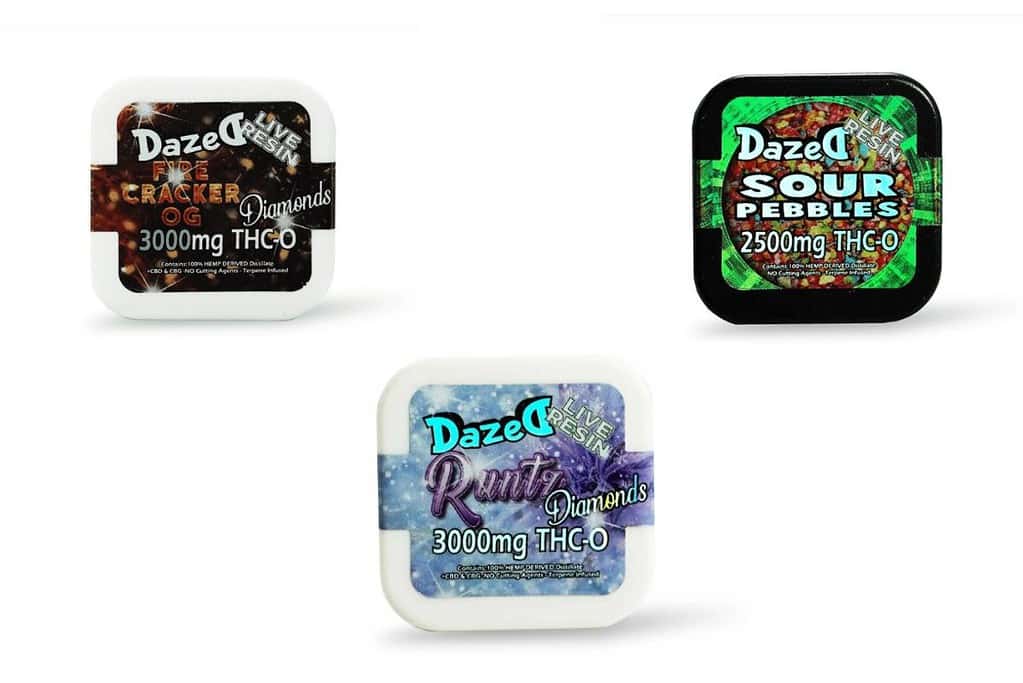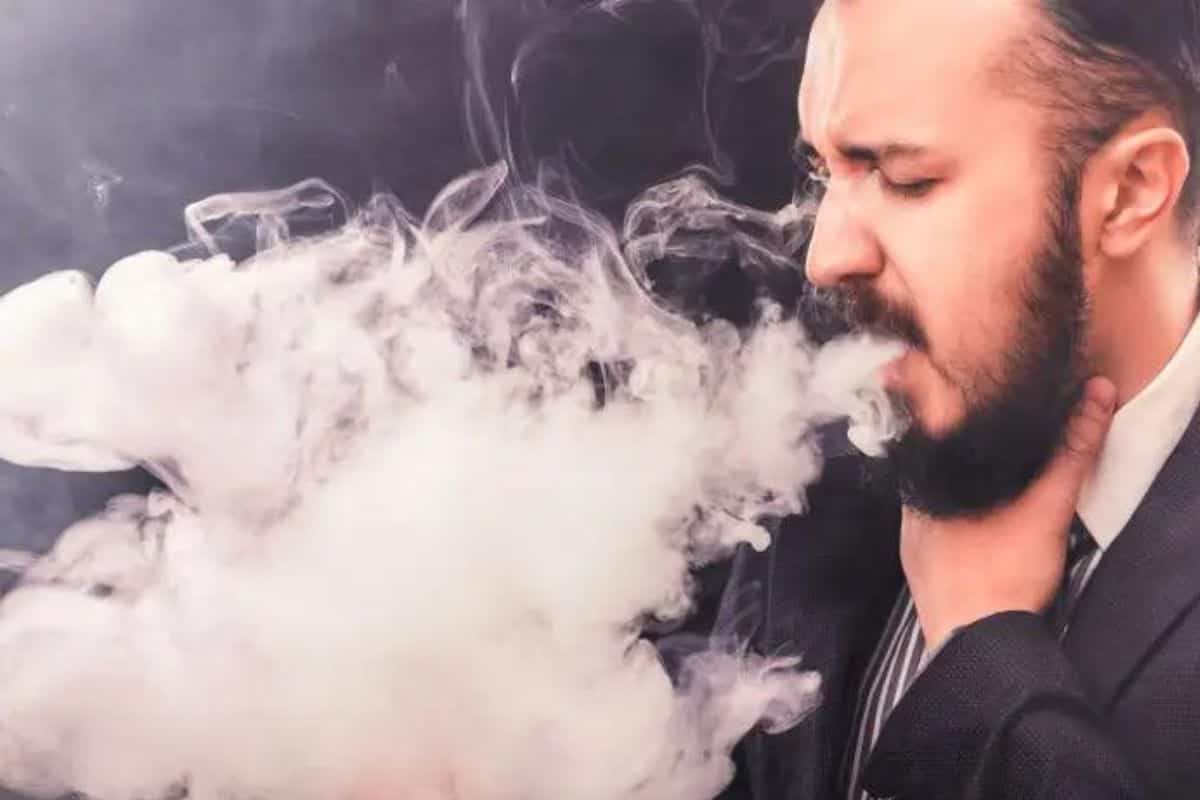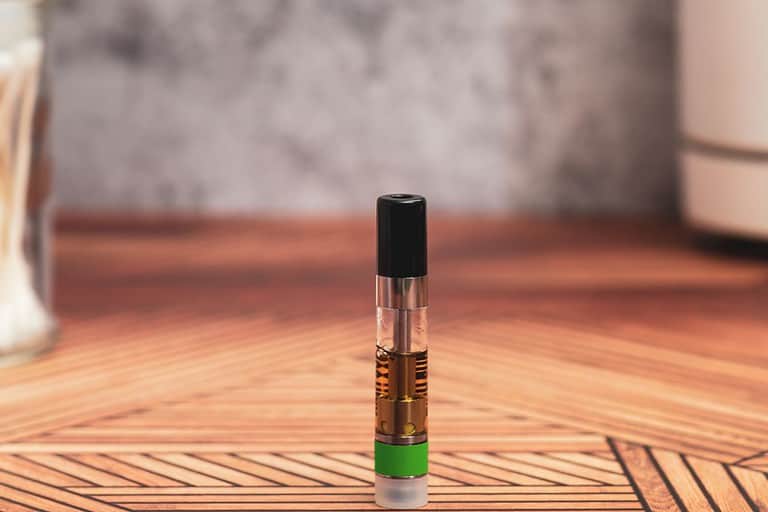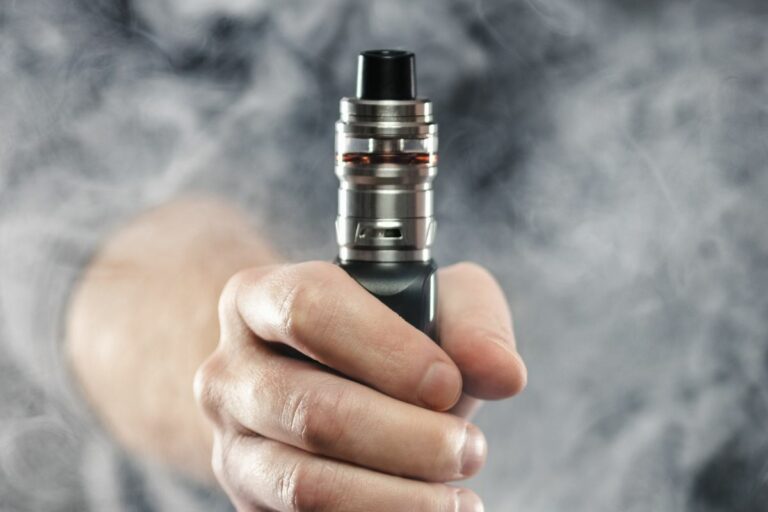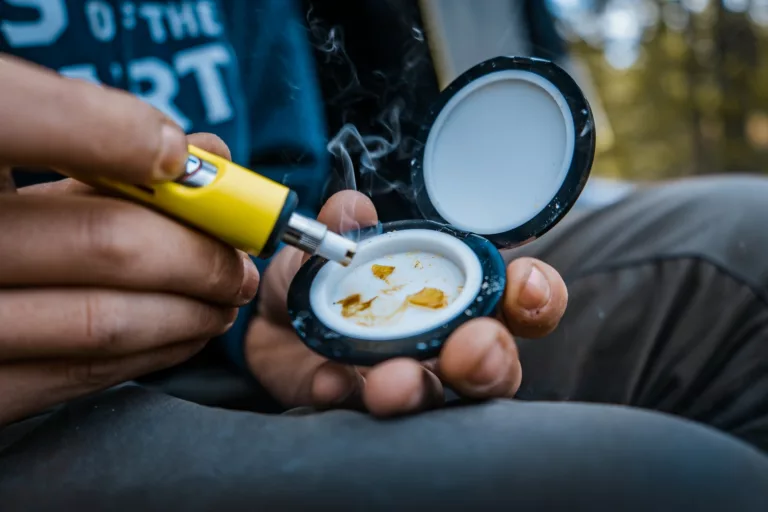Different Types of Wax Dabs: Exploring Your Options Clearly and Confidently
Wax dabs have gained popularity in recent years as a potent and concentrated form of cannabis consumption. They are made by extracting THC and other cannabinoids from the cannabis plant using various methods, resulting in a semi-solid substance with a sticky, wax-like texture. Dabbing, the process of consuming these concentrated extracts, entails heating the wax until it vaporizes and inhaling the potent vapor produced.
Different types of wax dabs offer various consistencies and potencies, allowing consumers to choose the type that suits their preferences and needs. Extraction methods play a crucial role in determining the final product’s quality, with some methods yielding cleaner and purer concentrates. As dabbing continues to evolve, new consumption methods and products emerge, making it essential for users to stay informed about their options and potential impacts.
Table of Contents
Key Takeaways
- Wax dabs are concentrated cannabis extracts with different consistencies and potencies, allowing for a customizable experience.
- Extraction methods are vital in determining the final product’s quality, and various techniques result in diverse types of wax dabs.
- Staying informed about new products and consumption methods is essential for users to make informed decisions and understand the potential impacts of dabbing.
The Basics of Wax Dabs
Wax dabs are a popular form of cannabis concentrates known for their high potency and unique texture. They are created through a process that involves using a solvent, such as butane or CO2, to extract the cannabinoids and terpenes from the cannabis plant. The result is a concentrated product with a higher THC content compared to traditional cannabis flower.
NEW CUSTOMER DISCOUNT
Save 15%
15% OFF YOUR ENTIRE ORDER FOR NEW CUSTOMERS USE CODE WELCOME15!
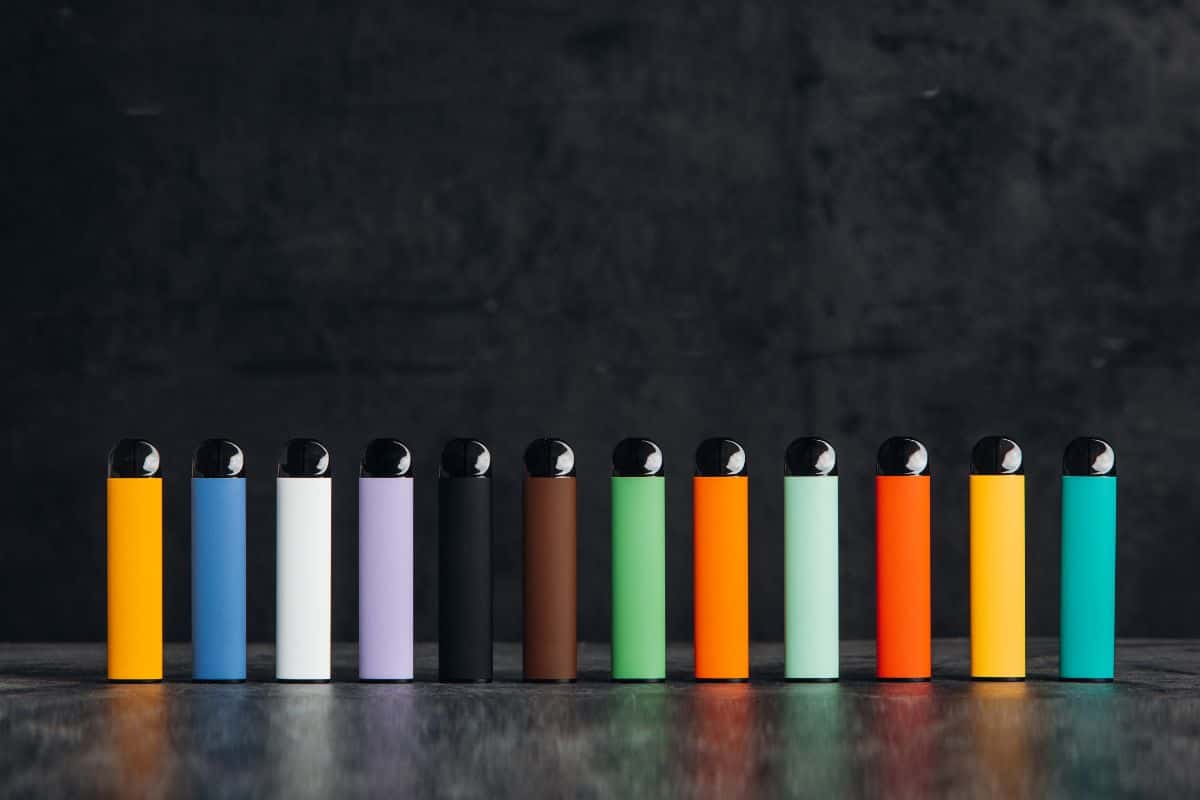
Types of Wax Dabs: There are several different types of cannabis concentrates that fall under the category of “wax dabs.” These include:
- Crumble: A more granular, crumbly texture
- Budder: A smoother, creamier texture
- Shatter: A hard, glass-like texture that can be brittle
The primary difference between these types of wax dabs lies in their appearance and consistency, which can be affected by factors such as the extraction method, temperature, and post-processing techniques used.
| Consuming Wax Dabs: To consume wax dabs, users typically use a specialized device called a dab rig. This involves heating a small portion of the concentrate on a heated surface, usually a nail or banger, which vaporizes the wax and allows the user to inhale the potent vapor. Some users also opt for vaporizer pens specifically designed for cannabis concentrates, which offer a more portable and discreet option. |
| Benefits of Wax Dabs: Wax dabs offer several benefits compared to traditional cannabis consumption methods. Due to their high concentration of cannabinoids, dabs can provide a more intense and fast-acting effect, which may be beneficial for those seeking immediate relief from symptoms such as pain or anxiety. Additionally, since dabs are consumed through vaporization rather than combustion, they can be a healthier alternative to smoking, as fewer harmful byproducts are produced. |
| Safety Considerations: Though wax dabs are a popular and effective method of cannabis consumption, there are some safety concerns to consider. Firstly, the extraction process can be dangerous, especially when using solvents like butane. It’s essential to purchase cannabis concentrates from reputable sources to ensure that the product was produced safely and contains no residual solvents. Additionally, the high potency of wax dabs can be overwhelming for inexperienced users, so it’s crucial to start with a small amount and adjust as needed. |
In conclusion, wax dabs represent a versatile and convenient way to consume cannabis with numerous benefits. However, users must be aware of the safety considerations and ensure they are using the product responsibly.
Understanding Dabbing
Dabbing is a method of consuming cannabis concentrates by heating them on a hot surface, usually a dab nail, and inhaling the vapor through a dab rig. Dabbing has gained popularity due to the potency and flavor of the concentrates, which come in various forms such as shatter, wax, and budder.
The process of dabbing involves using a dabber, a tool that helps pick up a small amount of concentrate. The dabber is touched to the heated dab nail, which is typically made from materials like titanium, quartz or ceramic. The heat causes the concentrate to vaporize, and the vapor is then inhaled through the dab rig, which filters and cools the vapor for a smoother experience.
A key factor in the dabbing experience is the temperature of the dab nail. Lower temperatures generally produce a smoother vapor with greater flavor, while higher temperatures produce more potent vapor and larger clouds. Achieving the optimal temperature for dabbing can be done with a variety of heating methods, including torches and e-nails (electrically-powered dab nails).
Dabbing concentrates can be more potent than traditional smoking methods due to the higher concentration of cannabinoids, such as THC and CBD. The process of preparing concentrates involves the extraction of these cannabinoids from the cannabis plant, resulting in a product that has a higher percentage of active compounds.
While dabbing can provide users with a more intense and satisfying experience, there are also some concerns about potential contamination in the production process, as well as harmful byproducts formed during dabbing. For example, an article on contamination concerns of cannabis concentrates discusses how the presence of waxes and fats could influence the quality and safety of dabs.
In conclusion, dabbing is a potent and flavorful way to consume cannabis concentrates. Understanding the various aspects of dabbing, including the types of concentrates, dab rig components, and heating methods, will help ensure a safe and enjoyable experience.
Types of Wax Dabs
Wax dabs are a popular way for cannabis users to consume concentrates that come in various textures and forms. These potent cannabis extracts provide a powerful and quick-acting high. Here are some of the most common types of wax dabs:
- Shatter is a glass-like concentrate that is transparent and brittle. Named for its tendency to ‘shatter’ when broken, this concentrate is created using a BHO (butane hash oil) extraction process.
- Crumble has a dry, crumbly texture, making it easy to handle. It is created by purging the oil at a slightly higher temperature during the extraction process, resulting in the distinctive consistency.
- Live Resin is a flavorful and aromatic concentrate made from fresh, flash-frozen cannabis plants, rather than dried and cured ones. This method preserves the terpenes, enhancing both flavor and aroma.
- Budder has a creamy, smooth texture, similar to butter. It is created by purging the concentrate at a lower temperature, resulting in a more viscous consistency than shatter or crumble.
- Crystalline is a highly purified concentrate, containing almost pure cannabinoids in crystalline form, often exceeding 95% purity. This type of concentrate results in one of the cleanest and most potent dabbing experiences available.
- Sugar Wax resembles granulated sugar, with a slightly sticky texture. This concentrate is formed when the cannabis oil begins to crystallize during the extraction process.
- Rosin is a solventless concentrate, made by applying heat and pressure to cannabis flowers, releasing the resin without the use of solvents like butane or CO2.
- Honeycomb is another brittle concentrate, resembling its namesake bee honeycomb in appearance and texture. It is generally created through a BHO extraction process, with its porous structure allowing for high levels of terpenes.
- Sauce is a high-terpene, liquid concentrate that appears similar to applesauce. It is made by adding cannabis-derived terpenes back into the concentrate after extraction, resulting in a potent and flavorful product.
- Pull and Snap is a concentrate with a consistency between shatter and budder. As the name suggests, it can be pulled and snapped easily, making it a popular choice for dabbing.
- Caviar is a concentrate containing cannabis buds that are dipped in hash oil and then coated in kief, creating a potent, multi-layered form of cannabis concentrate.
Each of these wax dabs offers a unique experience, varying in terms of flavor, potency, and consistency. Experimenting with different types can help you find the one that best suits your personal preferences and consumption method.
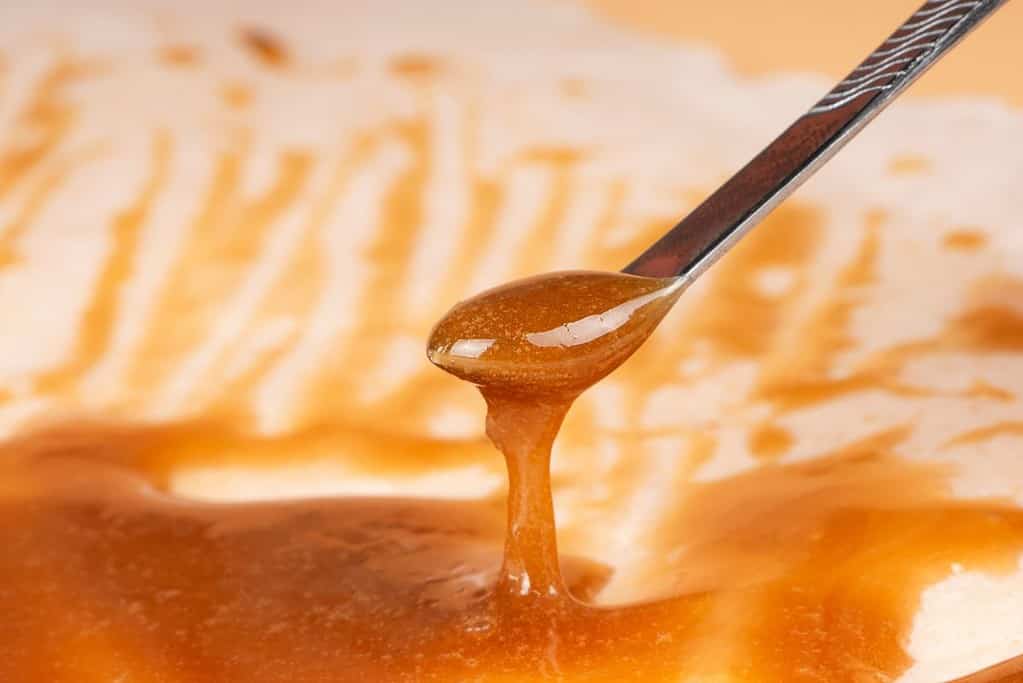
Dabs Extraction Methods
Dabs are concentrated forms of cannabis, created by extracting cannabinoids such as THC and CBD from the plant. There are several methods used to extract these concentrates, and each has its benefits and drawbacks.
One common method is the butane extraction method, which involves using butane as a solvent to extract cannabinoids from the plant material. The process yields a product known as butane hash oil (BHO), which can take various forms such as wax, shatter, or budder. However, butane is highly flammable, and this method can be dangerous if not done carefully and in a well-ventilated area. Proper purging of the product is also crucial to remove residual butane, ensuring a cleaner and safer concentrate (source).
Propane extraction is another solvent-based method similar to butane extraction. Propane has a lower boiling point than butane, which allows for quicker purging and a more refined concentrate. This method can result in oily or wax-like concentrates, but like butane, propane is also flammable and requires proper safety precautions.
The CO2 extraction method uses pressurized carbon dioxide as a solvent to extract cannabinoids. This method is considered safer and more environmentally friendly compared to butane or propane extraction. It is commonly used in commercial extract production due to its efficiency and ability to produce pure concentrates. However, the equipment needed for CO2 extraction is more expensive and complex (source).
Lastly, there are solventless extraction methods that do not use any chemicals to extract cannabinoids. These methods include rosin press, ice water extraction, and dry sift. Solventless extraction techniques may be more time-consuming and labor-intensive, but they produce pure concentrates without any chemical residues. These methods are usually favored by those seeking a more natural and clean concentrate.
In summary, various extraction methods exist for creating wax dabs, each with its advantages and disadvantages. The choice of method depends on factors such as safety, efficiency, and desired purity of the end product. It is essential to understand each method and take necessary precautions to ensure a safe and high-quality concentrate.
Chemical Components of Dabs
Dabs, also known as cannabis concentrates, come in various forms such as budder, wax, and shatter. They contain a high concentration of cannabinoids and terpenes, which contribute to their potency and unique aromas.
Cannabinoids
The primary cannabinoids found in dabs include THC, CBD, and Delta-8, which all possess distinct effects and properties. THC, or tetrahydrocannabinol, is the psychoactive compound responsible for the euphoric effects of cannabis. On the other hand, CBD, or cannabidiol, is a non-psychoactive compound with numerous therapeutic benefits, such as pain relief and anti-inflammatory properties. Delta-8, a lesser-known cannabinoid, provides milder psychoactive effects compared to THC and is rapidly gaining popularity for its unique properties.
Terpenes
Terpenes are organic compounds responsible for the distinct aromas and flavors of dabs. They also contribute to the entourage effect, a synergy between cannabinoids and terpenes that enhances the overall effects of the concentrate. Some common terpenes found in dabs include:
- Myrcene: Known for its earthy, musky aroma and potential relaxation and sedative effects.
- Limonene: Characterized by a citrus scent, limonene is believed to have mood-enhancing and stress-relieving properties.
- Caryophyllene: Recognized by its spicy, peppery aroma, caryophyllene is associated with potential anti-inflammatory and pain-relief effects.
The chemical makeup of dabs differs depending on the extraction method, source material, and purification processes used. As a result, it is essential for users to research and verify the quality and safety of the concentrates they consume, as well as their own tolerance and preferences when choosing a dab product.
Wax Dabs and Consumption Methods
Wax dabs are a concentrated form of cannabis, known for their high potency and distinct texture. They come in various forms, such as shatter, honeycomb, oil, or wax, depending on the extraction method used. There are several consumption methods for wax dabs, each offering a unique experience for users.
One popular method for consuming wax dabs is through a process called "dabbing." Dabbing involves using a special device called a dab rig or a vaporizer, specifically designed for use with concentrates. The wax is heated on a heated nail or coil, converting the concentrate into a vapor that is then inhaled by the user. This method provides a powerful and potent experience, as the vapor produced contains a high concentration of cannabinoids.
Alternatively, wax dabs can be used with a dab pen. These portable devices are battery-operated and typically consist of a mouthpiece, a heating element, and a chamber for holding the wax concentrate. Dab pens offer convenience and discretion for users, as they are easy to use and transport. To use a dab pen, simply load the wax into the chamber, activate the device, and inhale the vapor produced.
Using a vaporizer or a vape pen specifically designed for concentrates is another option for consuming wax dabs. These devices function similarly to dab pens but may offer additional features, such as temperature control for a more precise experience. When vaping with a concentrate-compatible vaporizer, it is essential to apply the wax correctly to the heating chamber or coil to ensure optimal vaporization.
Smoking wax dabs by incorporating them into a joint or a bowl with cannabis flower is also possible. To do this, place a small amount of wax on top of the cannabis flower in the joint or the bowl, and light it as usual. The wax will melt down and mix with the cannabis, enhancing the effects and potency of the smoking experience.
In summary, there are various methods for consuming wax dabs, each offering different, unique experiences for users. Whether using a dab rig, dab pen, vaporizer, or even smoking in a joint or bowl, these consumption methods allow users to enjoy the potent and powerful effects of wax concentrates. Keep in mind that dabbing or vaporizing is often preferred due to their potency and the reduced production of irritants in the vapor compared to smoking.

Impacts of Dabbing
Dabbing is a method of consuming cannabis concentrates, typically involving a small amount of the substance heated on a hot surface and inhaled. This method is known for its potent effects, and it has become increasingly popular among users seeking stronger and longer-lasting effects compared to traditional smoking methods. However, there also are some potential health concerns related to dabbing, which we will discuss in this section.
The concentrated form of cannabis used in dabbing, also referred to as wax or shatter, often contains higher levels of THC than traditional flower or vaping products. This increased potency can lead to a more intense high and can provide heightened relief from symptoms for some users. Additionally, many users report enhanced relaxation from dabbing compared to other methods of cannabis consumption.
However, dabbing also presents some potential hazards. High temperatures used for heating the concentrate can result in the production of harmful byproducts, such as toxicants or carcinogens. A study found that some users experienced more cannabis-related negative consequences from their dab use compared to other forms of cannabis consumption. These negative consequences can include a higher potential for addiction, increased tolerance, and a greater likelihood of experiencing withdrawal symptoms.
Another concern regarding dabbing is the lack of regulation and standardization in the production of cannabis concentrates. This can lead to variation in the quality of the concentrate, which might contain impurities or residual solvents. These contaminants can pose additional health risks when inhaled during the dabbing process.
In summary, dabbing offers users a potent, fast-acting method of cannabis consumption with potential for heightened effects, relief, and relaxation. However, it also carries risks such as the production of harmful byproducts and the possibility of exposure to contaminants. Users should exercise caution when dabbing and take the time to research and select high-quality concentrates for the best possible experience.
The Future of Wax Dabs
Wax dabs, a form of concentrated cannabis, have gained popularity in recent years due to their potency and unique consumption methods. As the legal market continues to expand, the future of wax dabs will likely be influenced by factors such as product safety, health concerns, and technological advancements in dabbing equipment.
One area of focus for the future of wax dabs is identifying potential health risks and ensuring the production of safe and reliable products. Research is ongoing in this area, investigating topics such as the formation of toxicants during dabbing and the safety of amateur production techniques1. These findings can help inform industry best practices and contribute to the development of harm reduction strategies for consumers.
Technological advancements, such as the rise of e-rigs2, are also shaping the future of wax dabs. E-rigs, or electronic dab rigs, provide users with a more convenient and controlled experience compared to traditional dab rigs. They often feature precise temperature settings and built-in safety measures that can enhance the overall dabbing experience. As more people are introduced to wax dabs through e-rigs, the demand for high-quality concentrates and innovative devices is expected to increase.
The growth of the legal cannabis market could also lead to increased regulation and standardization within the wax dab industry. As laws around cannabis use evolve, it’s likely that more stringent guidelines will be put in place to regulate the production and sale of wax dabs. This could lead to improvements in product quality, safety, and consistency, benefiting both consumers and industry stakeholders.
In conclusion, the future of wax dabs is multifaceted and will depend on several factors, including health research, technological advancements, and the development of the legal cannabis market. It is essential for stakeholders to remain informed and adaptable to ensure a positive future for wax dabs and all those who partake.
Browse popular vape collections:
- Nicotine Disposables
- 2000 Puff Nicotine Disposable Vapes
- 2500 Puff Nicotine Disposable Vapes
- 5000 Puff Nicotine Disposable Vapes
- 6000 Puff Disposable Nicotine Vapes
- 7000 Puff Nicotine Disposable Vapes
- Disposable Vape Deals
- Best Vape Brands
- 8000 Puff Nicotine Disposable Vapes
- 9000 Puff Nicotine Disposable Vapes
- 5% Nicotine Disposable Vapes
- Rechargeable Nicotine Disposable Vapes
- Vape Coils
- Dab Wax Pens
- Dab Wax Pen Battery
- Yocan Vapes
- Vape Cases
Frequently Asked Questions
What are the main consistencies of dabs?
Dabs are a type of cannabis concentrate that come in various textures and consistencies. The main types include shatter, which is a hard, glass-like substance that breaks easily, and wax, which has a softer, more pliable consistency. Other consistencies include crumble, budder, and sugar, which all differ in their appearance and texture.
How do THC-P dabs differ from others?
THC-P is a relatively new cannabinoid, which is more potent than ordinary THC. As such, THC-P dabs can produce stronger psychoactive effects than typical dabs. However, research on this cannabinoid is limited, and more studies are needed to understand its full effects and potential benefits or drawbacks.
What factors make a dab strain the best?
The “best” dab strain is subjective and depends on individual preferences. Factors that contribute to a quality dab strain include high potency, desirable terpene profiles, good flavor, and smooth vapor quality. Additionally, the extraction and manufacturing process is important, as it can impact the final product’s purity and safety.
Which types of concentrates are ideal for dabbing?
Various types of cannabis concentrates can be used for dabbing. These include shatter, wax, budder, crumble, and rosin. Each of these concentrates has its own unique properties and provides different experiences when dabbed. The ideal concentrate for dabbing will ultimately depend on the person’s preferences, desired effects, and available equipment.
What are the legal considerations for dab wax?
The legality of dabs varies depending on the jurisdiction. In many places where cannabis is legal for medical or recreational use, cannabis concentrates like dab wax are also legal. However, it is important to note that local regulations and restrictions may apply. It is essential to be aware of and adhere to the specific cannabis laws and regulations in your location.
What is the efficiency level of various dabs?
Different dabs can have varying levels of efficiency, mostly depending on their potency, purity, and the individual’s tolerance. Generally, dabs with high THC content are considered more potent and may produce stronger effects with less material. However, the efficiency of dabs can be influenced by the quality of the concentrate, the user’s experience, and the dabbing equipment used.

